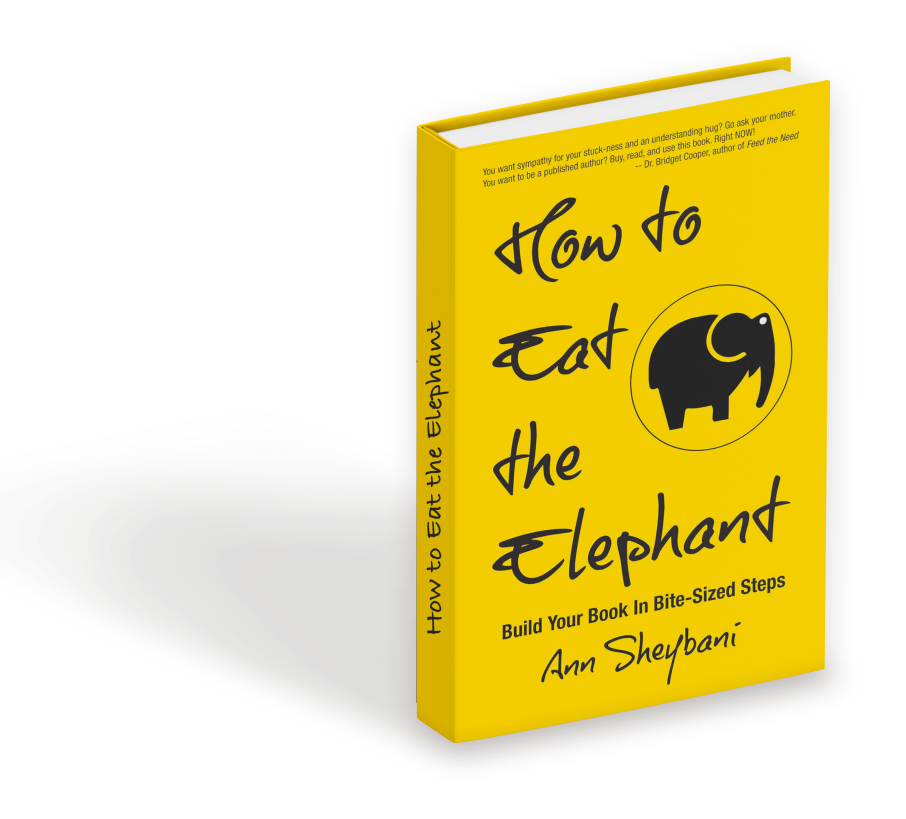Have you ever watched a professional runner run? Looks so easy, doesn’t it? They’ve all got that half smile playing across their face, that healthy sheen, those long, fluid strides that make the act seem so fun. From the couch, you can practically feel the endorphins pumping through your own body.
Inspired, you go out for a jog and discover that, instead of gliding like Flo Jo across the savannah, the wind whipping through your hair, you’re ready to throw up by the end of the block. You shake your head, confused, because you know nothing about the inglorious stages a runner must go through along the way. You figure if something so simple feels so hard, there’s got to be something wrong with you. Clearly, you’ve inherited your mother’s delicate genes, not to mention her chunky thighs, so you might as well stagger back home and take up bridge.
No surprises here, good writing is a lot like good running. There’s a lot more to the sport than meets the eye.
Just for a moment, I’d like to lift the skirts on writing and describe, in great detail, the “normal” process—the process that your favorite writers make look so deceptively easy. It’s important to know what’s really under there, so you’ll know what to expect. For fun, I’m going to break the process down into thirteen predictable stages, or steps.
1. You start with a brilliant idea for an essay, or a chapter, and you can hardly wait to get going because you’re really excited. You know exactly what you want to say. You can envision the perfect words pouring onto the paper while you sit back with your arms folded and witness the magic.
2. Grinning, you sketch out the story of a man you met who changed your life. Maybe you don’t know exactly how he changed your life, but you recount all the memorable details: how you met, what he looked like, what he said, what you said, even the kind of cologne he wore. Lots and lots of great details.
3. You write page after page until you reach the end and you’re ready to come to a conclusion. This man changed my life because…because….
4. You think back and you’re suddenly not sure how he changed your life, or that he even did, or why you chose to write about him in the first place, or what anything you wrote about means, when push comes to shove. A trickle of sweat slides down your neck.
5. After you get your third glass of water, or eat the contents of your refrigerator, you sit back down and think some more. What was the point? Because there is a God in heaven and (S)He is merciful, you suddenly realize the story is about something else entirely, something crucial. You just need to change a few things, now, get rid of some stuff that was supporting the original aborted idea. You had no idea you were such a genius!
6. You flesh out your new point. It’s really good.
7. Then you go back to the beginning of the piece and you realize that the story really starts on page four, which means you’ve got to cut those first four pages off—the ones, let’s be honest, that took so damn much effort and time to write. (Because you don’t waste, and we’ll talk more about this later, you stick those extraneous pages in the Scrap Heap, a separate file in your computer labeled as such, and continue on your way.)
8. When you’ve got your story down, and you’re feeling satisfied, you stick the draft in the bottom drawer. Even though you’ve been told not to edit in the field—not to go back and incessantly toy with your wording before your shitty first draft is done—you’re going to ignore my instructions, and go back in to reevaluate, instead of pushing forward on your next story.
9. At first glance, you think that what you’ve got in hand looks pretty damn good. You’re a natural. A genius. Oh, how you snort.
10. The next day, however, because you really can’t follow instructions, you look at it again. You can’t believe what’s happened! Seemingly overnight, some cruel six-year-old got into your document and turned your brilliance into complete and utter shit. You weep. Profusely. And threaten to quit.
11. On Wednesday, always on Wednesday, you fix a few things because you just can’t move on. Just because you have nothing better to do, now that you’re a total, irredeemable failure, you slip in that random idea that popped in your head when you were picking up the dry cleaning, the one you should have written down in your story notebook instead. And suddenly the project, once again, kicks to life.
12. Finally, on Thursday, you figure your piece is good enough, once again, to move on to the next section. You keep your head down, and you claim, should anybody ask, that you’d never edit in the field because you understand your goal is to push forward so you can complete a shitty first draft full of horrors and mistakes. You bristle at the suggestion you could be so stupid.
13. And to make a long, sad story short, by the time you finish your final draft—that draft you’ll mail out for publishing—you will have thrown out half of your chapters, or cut out enormous chunks of brilliance from one area and moved them to another. And that book of yours—its structure, its message, its tone—is nothing like what you envisioned in the beginning. It looks almost nothing like your shitty first draft, that draft you had to write to get to this point.
Here’s the good news, the take-home message: You do not have to write a perfect first draft, like Iman. You don’t even need to write a good one. In fact, consider it your job to write a Truly SHITTY First Draft. Because you just have to start.
You must start somewhere; or you’ll never get anywhere.
Heed my words. The book that you set out to write this first go round will not be the same book you end up with when you’re done. You are, therefore, wasting your precious time fiddling with things as you move along. Get the ideas down, as rough as they are, and push forward. Don’t edit in the field.
Remember, nothing is a waste—time; effort; those beautiful words you struggled to come up with, or received as a gift from the Universe. It’s all part of the process.
You don’t get to skip to the front of the line. You don’t get to run like Flo Jo before placing 155th in your town’s annual 5K. You don’t get to write Pride and Prejudice without creating, first, an awful lot of crap. Everyone goes through this sequence, this process, including Jane Austen.

